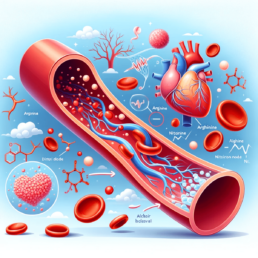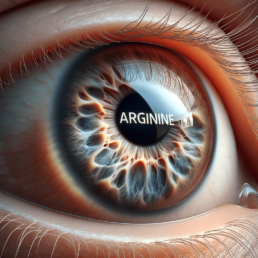Arginine While Fasting: Unlocking the Benefits
Unlocking the Benefits of Arginine While Fasting for Weight Loss and Enhanced Autophagy.
Fasting has emerged as a transformative approach to weight loss and improved health. This is done through its role in promoting autophagy. Autophagy is the body’s natural process of cleaning out damaged cells and regenerating new ones. As individuals seek to maximize the benefits of fasting, the role of amino, especially arginine, becomes important. Arginine is not just a buzzword but a concept worth a topic of keen interest exploring. Anyone looking to enhance their fasting results, particularly for weight loss and autophagy can benefit from this information.
Understanding Arginine Role
Arginine, a semi-essential amino acid, plays a critical role in various bodily functions. This includes the production of nitric oxide, which improves blood flow and nutrient delivery throughout the body. During fasting, arginine levels can become limited. Intriguingly, this may benefit the fasting process by pushing the body to turn to its internal energy reserves. This helps by accelerating weight loss and potentially enhancing the autophagy process.
Weight Loss and Arginine
Fasting triggers the body to search for alternative energy sources, typically turning to stored fats, which leads to weight loss. Arginine supplementation during fasting presents a paradox. It is beneficial for its health properties, its availability might reduce the body’s need to tap into these fat reserves. However, understanding the balance between supplementation and natural body processes is key. For those fasting with the goal of weight loss, the strategic use of arginine could potentially support metabolic health without significantly disrupting the fasting-induced metabolic shift.
Boosting Autophagy with Arginine
Autophagy, a vital cellular cleanup process, is one of the most sought-after benefits of fasting. It plays a crucial role in cell health, aging, and the prevention of diseases. The question arises: does arginine supplementation affect autophagy during fasting? While the direct impact of arginine on autophagy during fasting requires more research, it’s clear that maintaining a balance is essential. Properly timed arginine supplementation could support the body’s natural processes without hindering the autophagic benefits of fasting.
Arginine’s Potential Impact on Autophagy
- Nutrient Sensing and Autophagy: Fasting triggers autophagy by creating a nutrient scarcity, signaling the body to start cellular cleanup. Arginine supplementation during fasting could alter nutrient-sensing pathways, affecting autophagy.
- mTOR Pathway Activation: Arginine activates the mTOR pathway, which can inhibit autophagy by increasing protein synthesis. Fasting aims to reduce mTOR activity to boost autophagy, so arginine might counter this effect.
- Benefits versus Drawbacks: Although arginine offers health benefits, its supplementation during fasting periods requires careful consideration. Timing arginine intake correctly could manage its impact on autophagy.
Fasting and Arginine Supplementation Considerations
- Align Supplementation with Health Goals: Individuals should tailor their supplementation strategy to their health goals. Minimizing arginine during fasting may be wise for those focusing on autophagy.
- Time Supplementation Wisely: Taking arginine outside of fasting periods may allow individuals to enjoy its benefits without affecting autophagy.
- Seek Expert Advice: Consulting with healthcare or nutritional experts is crucial due to the complexity of fasting, autophagy, and amino acid supplementation.
Arginine supplementation offers various health benefits but may influence autophagy during fasting. For those aiming to enhance autophagy through fasting, considering the timing and amount of arginine supplementation is important. By understanding these biological mechanisms, individuals can make informed decisions to optimize their health outcomes, balancing the benefits of fasting and arginine supplementation.
Practical Tips for Incorporating Arginine During A Fast
- Timing is Key. Consider the timing of arginine supplementation to ensure it aligns with your fasting goals. For those focusing on weight loss and autophagy, taking arginine outside of the fasting window can offer the benefits. This is done without interfering in the fasting process.
- Monitor Your Progress. Keep track of your fasting outcomes and how supplements like arginine affect your weight loss and overall health. Adjustments can always be made to optimize results.
- Balance Your Diet. During your eating windows, focus on a balanced diet rich in nutrients to support your body’s needs. Including natural sources of arginine, such as nuts, seeds, and legumes is key.
To Summarize
Arginine during a fast is a nuanced topic with the potential to enhance the fasting experience, particularly for individuals focused on weight loss and autophagy. By understanding and respecting the delicate balance between supplementation and the natural fasting process, it’s possible to achieve optimal health outcomes.
Whether you’re a seasoned faster or just beginning your journey, the integration of arginine into your regimen requires thoughtful consideration to truly unlock the benefits of fasting.
Types Of Arginine And Health Benefits

The Types Of Arginine are important to know because each type can offer slightly different benefits. Lets dive deeper and find out why.
L-Arginine plays a pivotal role in numerous physiological processes, offering various health benefits. It supports blood pressure, circulation, and offers many health benefits.
Its different forms cater to specific needs, so some enhance its overall effectiveness and some its bioavailability. Let’s delve into the details of each type and how they are made.
L-Arginine HCl (Hydrochloride)
L-Arginine HCl (Hydrochloride) is a variant of the amino acid L-Arginine. It is crucial for several bodily functions. The list is large, including protein synthesis, ammonia detoxification, and the production of nitric oxide. The key difference between L-Arginine HCl and regular L-Arginine lies in their composition and solubility.
Differences from Base Arginine
- Composition: L-Arginine HCl combines L-Arginine with a hydrochloride molecule. This addition helps to stabilize the arginine, making it more palatable and increasing its solubility in water.
- Solubility: The primary advantage of L-Arginine HCl over base arginine is its enhanced solubility. This feature makes it easier to consume in liquid form and potentially improves its absorption in the digestive system.
- Taste: The hydrochloride form is generally considered to have a more tolerable taste comparing it to the base form, which is quite bitter.
Uses and Preferences
L-Arginine HCl is known for its various uses, particularly in areas related to cardiovascular health, athletic performance, and recovery from injuries or surgeries:
- Cardiovascular Health: Due to its role in nitric oxide production, L-Arginine HCl is often used to support cardiovascular functions. This includes improving blood flow and reducing blood pressure.
- Athletic Performance: Athletes may prefer L-Arginine HCl. It has strong potential for improving blood flow and oxygen delivery to muscles during intense workouts. It is good for enhancing performance and recovery.
- Wound Healing: Its ability to improve circulation also makes L-Arginine HCl a candidate for supporting faster wound healing.
Choosing L-Arginine HCl over Other Forms
The choice between L-Arginine HCl and other forms of L-Arginine often depends on the specific needs and preferences. Also important are potential sensitivities people may have:
- Digestibility and Absorption: Those who might have sensitivity to the base form or require a more easily absorbed variant may opt for L-Arginine HCl due to its enhanced solubility.
- Specific Health Goals: L-Arginine HCl might be preferred for cardiovascular support or to enhance exercise performance, where rapid absorption and efficacy are desired.
- Taste Preferences: The less bitter taste of L-Arginine HCl can make it a more palatable option for individuals who struggle with the taste of base L-Arginine supplements.
In summary, while all forms of L-Arginine provide similar fundamental benefits due to their role in nitric oxide production and protein synthesis, the choice of L-Arginine HCl over others might be influenced by its solubility, absorption rate, taste, and specific health objectives. Always consulting with a healthcare provider before starting any new supplement regimen is advisable to ensure it aligns with your health needs and goals.
L-Arginine AKG (Alpha-Ketoglutarate)
Arginine AKG (Alpha-Ketoglutarate) combines the amino acid L-Arginine with Alpha-Ketoglutarate, a crucial molecule in the Krebs cycle, responsible for energy production. This blend offers unique benefits over base L-Arginine and other Arginine forms.
Differences from Base Arginine
- Composition: The key difference lies in Alpha-Ketoglutarate’s addition to L-Arginine, enhancing the compound’s role in amino acid synthesis and energy generation.
- Absorption and Effectiveness: The body absorbs and utilizes L-Arginine AKG more efficiently than base L-Arginine. Alpha-Ketoglutarate increases L-Arginine’s stability and bioavailability.
- Energy Production: L-Arginine AKG’s involvement in the Krebs cycle makes it highly effective in boosting energy, offering significant benefits for energy-demanding activities.
Uses and Preferences
L-Arginine AKG is particularly popular for specific uses, mainly in the realms of athletic performance and recovery:
- Enhanced Athletic Performance: Athletes and bodybuilders often choose L-Arginine AKG for its superior ability to boost nitric oxide production, enhancing blood flow, oxygen delivery to muscles, and overall performance.
- Supports Muscle Recovery: The compound aids in quicker muscle recovery post-intense workouts by improving nutrient delivery to muscles.
- Energy Boost: People looking for an energy increase during physical activities benefit from L-Arginine AKG, thanks to its critical role in the energy production cycle.
Choosing L-Arginine AKG over Other Forms
Choosing L-Arginine AKG over other Arginine forms usually aligns with specific goals, especially concerning physical performance and energy needs:
- For Athletic Performance and Recovery: Individuals aiming to maximize physical performance and enhance muscle recovery might find L-Arginine AKG more suitable due to its nitric oxide production and absorption benefits.
- For Energy Enhancement: Those in need of an energy uplift for workouts or athletic endeavors may prefer L-Arginine AKG for its direct involvement in energy production.
L-Arginine Aspartate
Arginine Aspartate stands out from L-Arginine AKG and base L-Arginine due to its unique combination and specific applications:
Unique Characteristics of L-Arginine Aspartate
- Aspartate Component: Unlike AKG, which is involved in the Krebs cycle and energy production, aspartate plays a critical role in the urea cycle. It is adept at helping to eliminate excess nitrogen from the body. This function of aspartate can enhance endurance by efficiently removing ammonia. Ammonia is a byproduct of exercising muscle, thus potentially reducing fatigue.
- Neurotransmitter Support: Aspartic acid acts as a neurotransmitter in the brain. This can influence the production of testosterone, enhancing hormone levels that are crucial for muscle mass and strength. This aspect differentiates it from L-Arginine AKG, which does not directly influence neurotransmitter levels or hormone production.
- Enhanced Endurance and Recovery: Both AKG and aspartate forms are known for their potential to enhance athletic performance,. L-Arginine Aspartate however, specifically offers benefits related to endurance and recovery. This is due to its role in ammonia detoxification.
Applications and When to Use L-Arginine Aspartate
- For Enhanced Endurance Sports Performance: Due to its efficient role in ammonia detoxification, individuals engaged in endurance sports might prefer L-Arginine Aspartate to support longer periods of physical activity and to reduce recovery time.
- When Seeking Hormonal Support: Those looking into natural ways to support hormone production, particularly testosterone, might find L-Arginine Aspartate beneficial due to the neurotransmitter role of aspartic acid.
- For Comprehensive Athletic Support: Athletes focusing on both performance and recovery, especially in sports that demand high endurance, might choose L-Arginine Aspartate over AKG or base L-Arginine for its dual action in energy metabolism and detoxification.
In contrast to L-Arginine AKG, which is often chosen for its direct benefits on energy production and nitric oxide synthesis, L-Arginine Aspartate offers a broader spectrum of support, particularly beneficial for endurance and recovery, making it a distinct choice for athletes and individuals seeking specific health benefits.
L-Arginine Malate
Arginine Malate is a compound that combines L-Arginine with Malate, a tricarboxylic acid cycle (TCA cycle or Krebs cycle) intermediate. This combination offers distinct advantages and uses compared to other forms of L-Arginine.
Differences and Unique Benefits of L-Arginine Malate
- Enhanced Energy Production: Malate plays a crucial role in the Krebs cycle, a key energy-producing process in the body. L-Arginine Malate, therefore, not only boosts nitric oxide levels but also supports energy production at a cellular level. Therefore making it particularly beneficial for endurance and performance.
- Improved Athletic Performance: Due to its dual role in enhancing nitric oxide production and supporting the Krebs cycle, L-Arginine Malate is often chosen by athletes. They choose it seeking to improve their performance, endurance, and recovery times.
- Support for Aerobic and Anaerobic Metabolism: The presence of Malate supports both aerobic (with oxygen) and anaerobic (without oxygen) energy pathways, offering a versatile energy boost that can be beneficial across different types of physical activities.
Contrast with Other Forms of L-Arginine
- L-Arginine HCl: While L-Arginine HCl is primarily sought after for its improved solubility and absorption, L-Arginine Malate offers the added benefit of supporting energy production, making it a more suitable choice for individuals looking to enhance physical performance and energy levels.
- L-Arginine AKG: Although L-Arginine AKG is also known for its role in energy production and nitric oxide synthesis, L-Arginine Malate might be preferred for activities that require sustained energy over longer periods, due to the efficient role of Malate in the Krebs cycle.
- Base L-Arginine: The base form of L-Arginine primarily serves to increase nitric oxide production. However, L-Arginine Malate extends beyond this by also enhancing energy production, offering a broader range of benefits for physical activity and performance.
When to Use L-Arginine Malate
- Endurance Athletes: Individuals engaged in long-duration sports or activities may find L-Arginine Malate particularly beneficial for its dual role in boosting nitric oxide levels and supporting sustained energy production.
- Those Seeking Enhanced Recovery: The improved blood flow from increased nitric oxide production, combined with efficient energy metabolism, can help facilitate quicker recovery after intense workouts.
- Individuals Focused on Aerobic and Anaerobic Performance: L-Arginine Malate’s support for both energy pathways makes it an excellent choice for athletes who engage in a mix of aerobic and anaerobic exercises.
In summary, L-Arginine Malate offers unique benefits that make it stand out from other forms of L-Arginine, especially for athletes and individuals seeking to improve their energy levels, performance, and recovery. Its ability to support nitric oxide production and energy metabolism simultaneously provides a comprehensive approach to enhancing physical performance.
In essence, L-Arginine AKG stands out for individuals focused on sports performance. It’s great for recovery, and energy thanks to its enhanced bioavailability and contribution to energy metabolism. Each of these forms of L-Arginine is designed to optimize the amino acid’s benefits. Whether used for improving cardiovascular health, enhancing athletic performance, or supporting overall well-being. The choice of form can depend on the desired effect, the method of delivery, and individual tolerance.
Heavy Metal Detox Kit
Heavy Metal Detox Kit: Unveil the Power with Chelanox
In the modern environment, heavy metals infiltrate our bodies from sources like pollution, food, and water. These toxins can accumulate so they pose grave health risks. The heavy metal detox kit in capsule for “Chelanox” presents a comprehensive solution. This is because it combines natural ingredients, each selected for their detoxifying properties. Let’s delve into the ingredients that make Chelanox a potent choice for purging heavy metals from the body.
Chelanox Ingredients for Effective Heavy Metal Detox
EDTA: Ethylenediaminetetraacetic acid (EDTA) acts as a chelating agent, binding to heavy metals in the bloodstream to facilitate their removal. It efficiently targets metals such as lead, mercury, and arsenic, so we have made it a cornerstone of detox efforts.
EDTA Safety
Ethylenediaminetetraacetic acid (EDTA) is generally safe when used under medical supervision. It’s commonly used in chelation therapy to remove heavy metals from the bloodstream. However, it’s essential to use it correctly, as inappropriate doses can lead to adverse effects.
Chlorella Algae Safety
Chlorella Algae is considered safe for most people when consumed in recommended amounts. It’s rich in nutrients and has been used in supplements for detoxification. People with allergies to molds or a sensitivity to iodine should exercise caution.
Chlorella Algae: This green algae binds to heavy metals, aiding in their removal. Its high chlorophyll content boosts detoxification, making it a key ingredient in Chelanox.
Modified Citrus Pectin: Easily absorbed by the body, this form of pectin chelates heavy metals, supporting their excretion. It also enhances cellular health and immune function, offering benefits beyond detoxification.
Modified Citrus Pectin Safety
Modified Citrus Pectin is safe for most individuals when taken orally. It is derived from citrus peels and has been used in dietary supplements for its detoxifying properties. As with any supplement, following recommended doses is crucial to avoid digestive discomfort.
Cilantro Leaf Extract 4:1: Celebrated for its detoxifying capabilities, especially in mercury removal, cilantro’s concentrated extract amplifies these benefits in Chelanox.
Cilantro Leaf Extract Safety
This leaf is generally safe when consumed in food amounts. The extract is used for detoxification purposes. It should be taken according to product guidelines to avoid any potential side effects, such as allergic reactions in sensitive individuals.
Shilajit 10:1 Extract: Packed with fulvic acid, Shilajit boosts the body’s detox pathways, supporting toxin removal. Its inclusion enhances Chelanox’s effectiveness against heavy metal accumulation.
Shilajit Safety
This is a natural resin, is considered safe for most adults when taken in supplement form at recommended dosages. It’s important to source Shilajit from reputable suppliers, as low-quality products may contain harmful contaminants.
Zeolite: This mineral traps and removes heavy metals, thanks to its unique structure. It’s an excellent addition to Chelanox, contributing to its detox prowess.
Zeolite Safety
Zeolite supplements are safe for short-term use. Limited data exists on their long-term safety, so using zeolite with a healthcare provider’s guidance, especially for detox purposes, is advisable.
NAC (N-Acetyl Cysteine): As a precursor to glutathione, a potent detoxifier, NAC combats oxidative stress and aids the liver in eliminating heavy metals.
Alpha Lipoic Acid: This antioxidant aids the body’s detox processes because it rejuvenates other antioxidants, bolstering the fight against heavy metals.
Uva Ursi Leaf Powder: Supporting urinary tract health, Uva Ursi facilitates toxin elimination, including heavy metals, through the urinary system.
Milk Thistle Seed Powder: This herb enhances liver health so it is crucial for detoxification. It protects and regenerates liver cells, improving the body’s capacity to cleanse itself of toxins, including heavy metals.
Conclusion
Chelanox’s heavy metal detox kit excels with its blend of natural ingredients, each playing a role in the effective removal of heavy metals. Every element of Chelanox has designed to enhance detoxification and works in promoting health. Choosing Chelanox allows individuals to cleanse their bodies naturally and support overall well-being effectively.
Arginine and PAD
Arginine and PAD: A Comprehensive Overview
Arginine, an essential amino acid, plays a pivotal role in various bodily functions. The most well known role is in the regulation of blood pressure. Historically, researchers have studied its benefits, particularly those related to improving cardiovascular health.
Arginine’s works because of the synthesis of nitric oxide, a compound essential for opening your blood vessels, thereby reducing blood pressure. Studies, such as those published in the “Journal of Clinical Hypertension,” highlight its efficacy in managing hypertension, a common precursor to Peripheral Arterial Disease (PAD).
The Connection Between Arginine and PAD
Peripheral Arterial Disease is a condition where one has a narrowing of blood vessels and reduced blood flow. This is usually in the legs. The link between arginine and PAD stems from arginine’s ability to improve blood flow.
By enhancing nitric oxide production, arginine aids in dilating blood vessels, which is crucial for PAD patients. Research in the “American Heart Journal” supports the use of arginine supplementation, showing significant improvement in the symptoms of PAD, such as leg pain and walking distance.
Clinical Evidence Supporting Arginine for PAD
Clinical trials further make the case for arginine’s role in PAD management. A landmark study published in “Circulation” demonstrated that arginine supplementation led to marked improvements in endothelial function among PAD patients.
Participants reported enhanced walking ability and reduced symptoms, underscoring arginine’s potential as a therapeutic agent. Another study in the “European Journal of Cardiovascular Nursing” echoed these findings, noting improved quality of life in PAD patients following arginine supplementation.
The Future of Arginine in PAD Treatment
The growing body of evidence suggests a promising future for arginine in PAD treatment. As research continues to evolve, arginine’s role becomes increasingly significant. Healthcare professionals are beginning to recognize the amino acid’s value not only in managing PAD symptoms but also in offering a non-invasive treatment alternative. With further studies ahead for sure, arginine could become a cornerstone in PAD therapy, offering hope to those afflicted by this debilitating condition.
Arginine’s journey from a blood pressure regulator to a potential PAD treatment highlights its therapeutic powers. The amino acid’s ability to enhance nitric oxide production and improve vascular function positions it as an invaluable tool in combating PAD. Arginine stands out as a beacon of hope for millions suffering from cardiovascular diseases. It’s use promises a healthier, more active future for many.
How Can I Tell if Taking Arginine is Helping?
Determining the effectiveness of Arginine, especially for conditions like Peripheral Arterial Disease (PAD), involves observing specific health improvements. Consulting with healthcare professionals is also key. Here are a few things to watch for:
- Improved Circulation and Reduced Symptoms of PAD: Arginine can enhance blood flow, leading to noticeable improvements in symptoms associated with PAD. These can be things such as less pain during walking, increased walking distance without discomfort, and reduced symptoms of leg pain due to poor circulation.
- Enhanced Exercise Performance: As Arginine helps improve blood flow, you might find an improvement in your overall exercise habbits. This includes longer times of physical activity without fatigue and better recovery.
- Blood Pressure Changes: Arginine’s impact on nitric oxide production can lead to vasodilation. This is just a fancy way of saying “It opens your veins”. This helps in reducing blood pressure. Monitoring your blood pressure can provide tangible evidence of Arginine’s effects. A consistent decrease in readings may indicate its positive impact on your cardiovascular health.
- Consult Blood Tests: Blood tests can reveal changes in the levels of certain markers that indicate improved vascular health. One important one is reduced levels of LDL cholesterol and increased HDL cholesterol. Your doctor can help interpret these results and determine if Arginine is contributing to these changes.
- Professional Evaluation: Regular check-ups with your healthcare provider are vital. They can perform tests to assess the health of your blood vessels and heart, providing a professional perspective on whether Arginine is beneficial for you.
Remember, while these indicators can suggest Arginine’s effectiveness, individual responses may vary. It’s essential to use Arginine under medical supervision. Especially if you have pre-existing health conditions or are taking other medications. Always discuss with your healthcare provider before starting any new supplement to ensure it’s appropriate for your health needs.
Join Us To Learn More
Joining the Bionox newsletter and trying Ultimate Nitric Oxide Nutrition could be a game-changer for your health. This is especially true if you’re seeking to improve cardiovascular wellness and enhance overall vitality.
By subscribing below, you’ll gain exclusive access to the latest insights, health tips, and breakthroughs in nitric oxide research and nutrition. Ultimate Nitric Oxide Nutrition, crafted with precision, aims to harness the power of Arginine and other key nutrients to support optimal blood flow, energy levels, and nutrient delivery throughout your body.
This innovative approach not only targets the foundations of cardiovascular health but also empowers your body to perform at its best. Whether you’re looking to boost your exercise performance, improve circulation, Bionox offers the knowledge and nutritional solutions to guide you on your journey. Join the Bionox community today to start transforming your health with the power of nitric oxide nutrition.
Top 5 Reasons to Stop Taking Arginine Alone
Stop Taking Arginine you say? Is there a reason you should stop or is there simply a better way to take it? Lets see!
Scientists discovered arginine, an amino acid, in the late 19th century. Its use has surged in popularity over the years as a coveted supplement among athletes and fitness enthusiasts. It is also popular amoung those seeking to improve their cardiovascular health. Also, it can support lower blood pressure and offers support for those seeking cognitive improvements.
What Is Arginine?
This semi-essential amino acid plays a pivotal role in synthesizing proteins and supporting nitric oxide production in the body. It also enhances blood flow and nutrient delivery to muscle tissues. Its reputation for boosting exercise performance, aiding in recovery, and offering cardiovascular benefits is well know. This reputation has cemented arginine’s place on the shelves of health stores and in the regimens of health-conscious individuals worldwide. But does it work? Should you stop taking arginine?
The burgeoning interest in arginine has also ushered in a wave of scrutiny and research aimed at understanding its efficacy.
Arginine’s Benefits
Arginine’s benefits are not in dispute. Emerging evidence, however, suggests that its effectiveness can be significantly amplified when combined with other nutrients. So and we aim to show why your should stop taking arginine alone. This article aims to shed light on the limitations of solo arginine supplementation. We strongly advocate for its combination with other nutrients because of improved health outcomes.
One of the primary reasons behind the push for combining arginine with other ingredients lies in its bioavailability. The body’s ability to utilize it effectively is a common concern. It also has a powerful effect of other substances such as NOS ( Nitric Oxide Synthase). When taken alone, the absorption of arginine can encounter physiological barriers that limit its effectiveness, absorption and lifespan.
Other Amino Acids
The presence of other amino acids can compete with arginine for absorption in the gut. This reduces the amount that ultimately enters the bloodstream and reaches the tissues where it is most needed. However, some amino acids have the opposite effect and can boost its effect! Just this alone is a great justification for why you should stop taking arginine alone!
This competition from the wrong kinds of amino acids can diminish the perceived benefits of arginine. This is particularly so in the realms of exercise performance and cardiovascular health.
Better Blood Vessel Dilation
Arginine’s role in the production of nitric oxide has been well-documented. This is because the conversion of arginine into nitric oxide can be inefficient without other complementary nutrients. This inefficiency highlights another limitation of relying solely on arginine. To achieve desired health outcomes, such as improved blood flow and improved exercise capacity, more is needed.
The case for combining arginine with other nutrients also extends to its synergistic interactions with certain vitamins and minerals. For example, vitamin D has been shown to work in tandem with arginine to bolster the immune system. It also plays a role in helping to support bone health. Antioxidants like vitamins E and C can enhance arginine’s cardiovascular benefits by reducing stress and inflammation. These interactions underscore the multifaceted nature of nutrition and wellness. This is because the combined effect of different nutrients often surpasses the sum of their individual benefits.
Arginine As A Supplement
The purpose of this article is not to diminish the value of arginine as a supplement. We aim to illuminate a more nature based approach to its use. By combining arginine with complementary nutrients such as citrulline, vitamin D, horse chestnut, and vitamins E and C, individuals can potentially unlock a broader spectrum of health benefits and achieve more pronounced improvements in cardiovascular health, exercise performance, and overall well-being.

As we delve deeper into the limitations of solo arginine supplementation it becomes clear that the path to optimal health is not through isolated ingredients. We see it is through a well-rounded and informed approach to nutrition. This perspective enriches our understanding of how different nutrients interact. It also empowers us to make more effective decisions about our health and wellness strategies.
Reason 1: Limited Absorption and Bioavailability
Arginine, when consumed as a standalone supplement, faces significant challenges related to its absorption and bioavailability in the human body. This amino acid competes with other amino acids for transporters in the gut and bloodstream. This competition can significantly reduce the amount of arginine that is effectively absorbed and utilized by the body. Yet another reason why you should stop taking arginine alone.
Absorption
The presence of other amino acids in the digestive system can inhibit arginine’s entry into the bloodstream. This sometimes diminishes its overall effectiveness, making it a waste of time and money to consume.
The bioavailability of arginine is not just about how much is absorbed. How efficiently it is used by the body is also important. This is because once absorbed, arginine serves as a precursor for the synthesis of nitric oxide (NO). As mentioned before NO a critical molecule for cardiovascular health, immune function, and wound healing.
The conversion rate of arginine to nitric oxide can be lowered or just plan stopped in the absence of complementary nutrients. This leads to less than ideal health outcomes. So to summarize, add the wrong things and arginine may not work. Add the right things and you can put it in overdrive!
Combinations That Count: Stop Taking Arginine By Itself
The issue of limited absorption and bioavailability underscores the importance of not just consuming arginine but ensuring it is taken correctly. This can be improved by combining arginine with other things that enhance its absorption or work together to bolster its effects.
For instance, pairing arginine with citrulline, another amino acid, has been shown to enhance the overall bioavailability of arginine, see chart below for more info.
Citrulline is converted into arginine in the kidney, which not only increases the plasma levels of arginine but also prolongs its availability for nitric oxide production, thereby amplifying the cardiovascular benefits.
Summary of Reason #1
So in summary, while arginine alone possesses undeniable health benefits, its limited absorption and bioavailability can hinder its effectiveness. There are great reasons why you may want to stop taking arginine alone. By understanding and addressing these limitations through strategic supplementation, individuals can better harness arginine’s potential health benefits. This approach not only optimizes the intake of arginine but also underscores a broader principle. That being; nutritional supplementation often yields the best results when approached naturally.
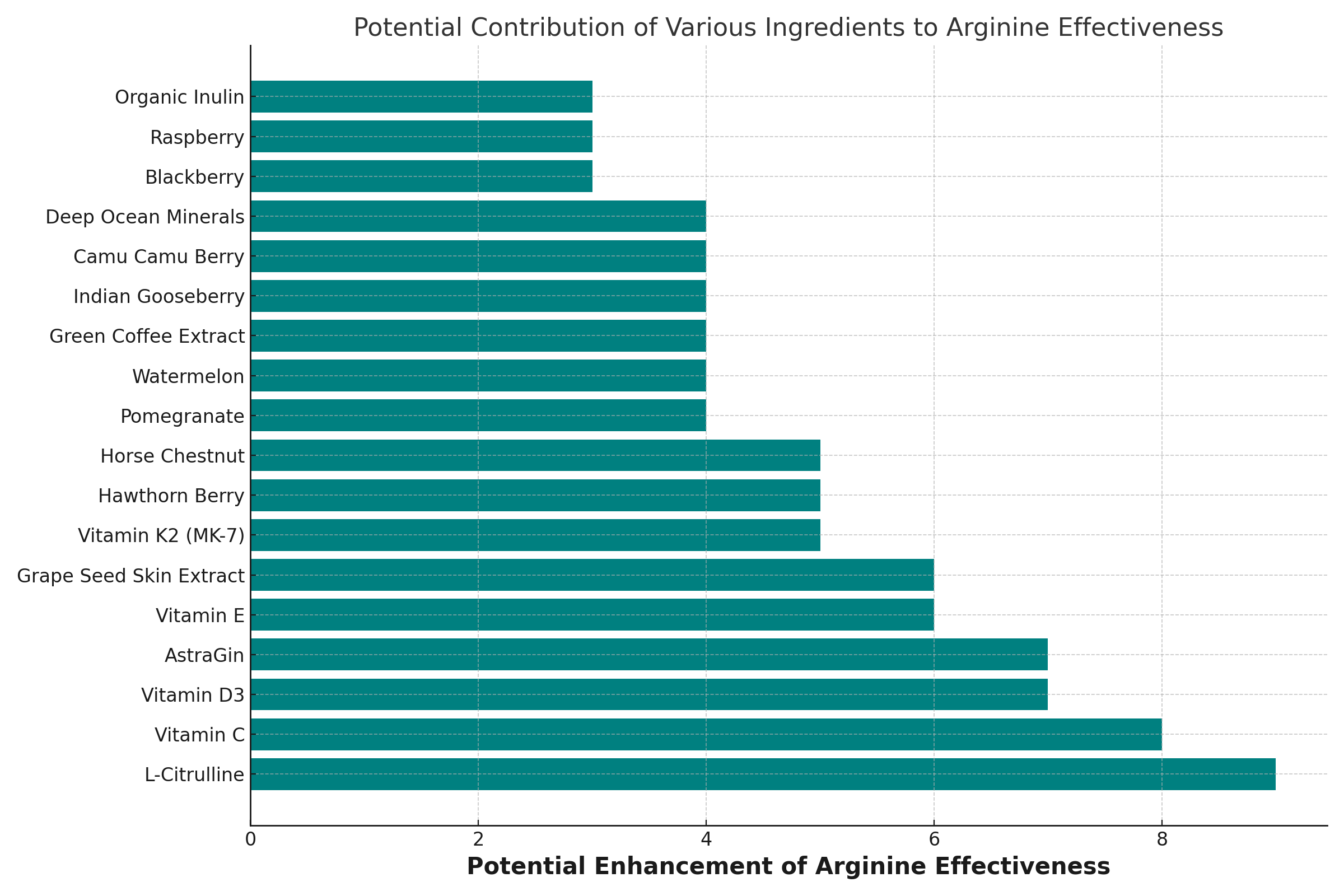
Stop Taking Arginine Alone
- Vitamin C: Enhances nitric oxide production from Arginine by stabilizing it and reducing its breakdown.
- Vitamin D3: Works synergistically to support cardiovascular health and may enhance the effectiveness of Arginine. Vitamin D also helps your body produce more NOS.
- Vitamin E: Protects cells from cellular stress, potentially enhancing Arginine’s effects on vascular health.
- Vitamin K2 (MK-7): May work with Arginine to support arterial health and flexibility.
- L-Citrulline: Converts to Arginine in the body, increasing Arginine levels and nitric oxide production.
- Pomegranate, Watermelon, Blackberry, Raspberry: These fruits are rich in antioxidants and other compounds that can support nitric oxide production and enhance the effects of Arginine.
- Hawthorn Berry, Horse Chestnut: Known for their vascular health benefits, potentially complementing Arginine’s cardiovascular effects.
- Green Coffee Extract, Indian Gooseberry, Grape Seed Skin Extract, Camu Camu Berry: These ingredients offer antioxidant support, which can synergize with Arginine’s health benefits.
- Deep Ocean Minerals: May provide trace minerals that support overall metabolic processes, including those involving Arginine.
- AstraGin: Known to enhance nutrient absorption, potentially improving Arginine bioavailability.
- Organic Inulin: A prebiotic fiber that can support gut health, possibly affecting Arginine’s absorption positively.
Cardiovascular Health
Arginine is well-known for its critical role in the production of nitric oxide (NO). NO is a vital molecule that influences various aspects of cardiovascular health as we have discussed above.
Nitric oxide acts as a vasodilator, meaning it relaxes the inner muscles of blood vessels. This causes them to widen and thereby improve blood flow and energy, etc.
This effect can lower blood pressure, enhance exercise performance, and reduce the risk of cardiovascular diseases. It even helps with some cognitive issues and diseases of the eye as well.
Despite its potential, the production of nitric oxide from arginine can be hampered when arginine is consumed alone. This is due to factors like enzyme availability, oxidative stress, and the presence of asymmetric dimethylarginine (ADMA). ADMA is a natural inhibitor of nitric oxide synthesis. In other words, if you stop taking arginine by itself, you get more of it. The results are better if your taking it with the right things.
Citrulline
The combination of arginine with citrulline is a strategy that can overcome these limitations. Combining the two can lead to more efficient nitric oxide production. This is yet another reason why you may want to top taking arginine alone. Citrulline is converted into arginine in the kidneys. It increases the plasma levels of arginine and also provides a more sustained release of arginine for nitric oxide production. Combining bypasses the competitive absorption issues in the gut. It also helps maintain higher levels of nitric oxide in the bloodstream. Combining the two enhanci cardiovascular benefits such as improved vascular tone, blood flow, and reduced blood pressure.
Vitamins E, C, and K2
These play supportive roles in enhancing nitric oxide production and ensuring its stability:
Vitamin E
This antioxidant helps protect nitric oxide from degradation via oxidatiion that can rapidly neutralize nitric oxide. It reduces the availability and effectiveness of NO in vasodilation. By reducing oxidative stress, vitamin E preserves nitric oxide levels. More NO means more cardiovascular benefits.
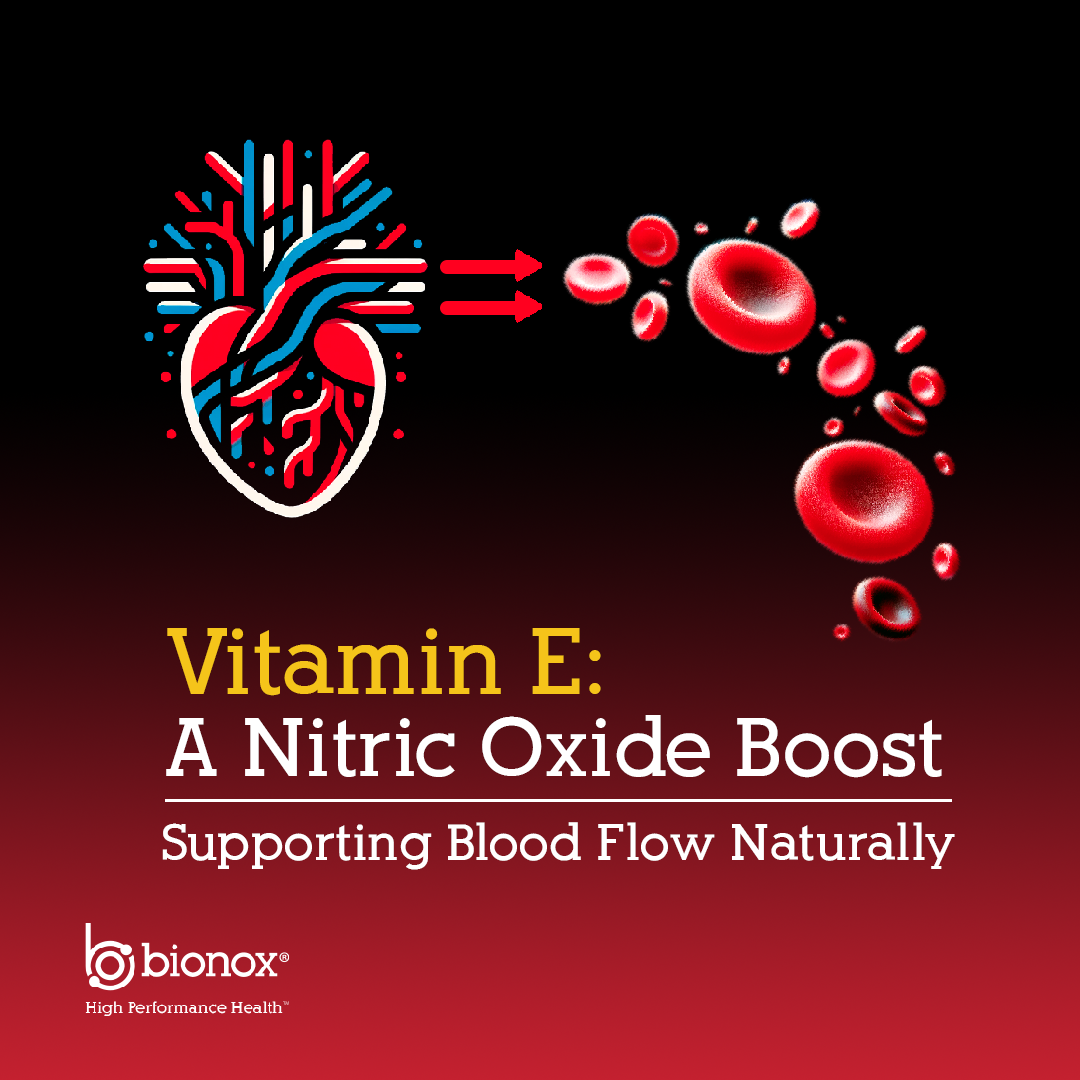
Vitamin C
Similar to vitamin E, vitamin C is an antioxidant that can synergize with arginine by stabilizing nitric oxide. Vitamin C reduces its breakdown in the bloodstream. C has also been shown to regenerate vitamin E, thus working together. These vitamins create a powerful antioxidant network that protects nitric oxide and enhances its effects on blood vessel dilation.
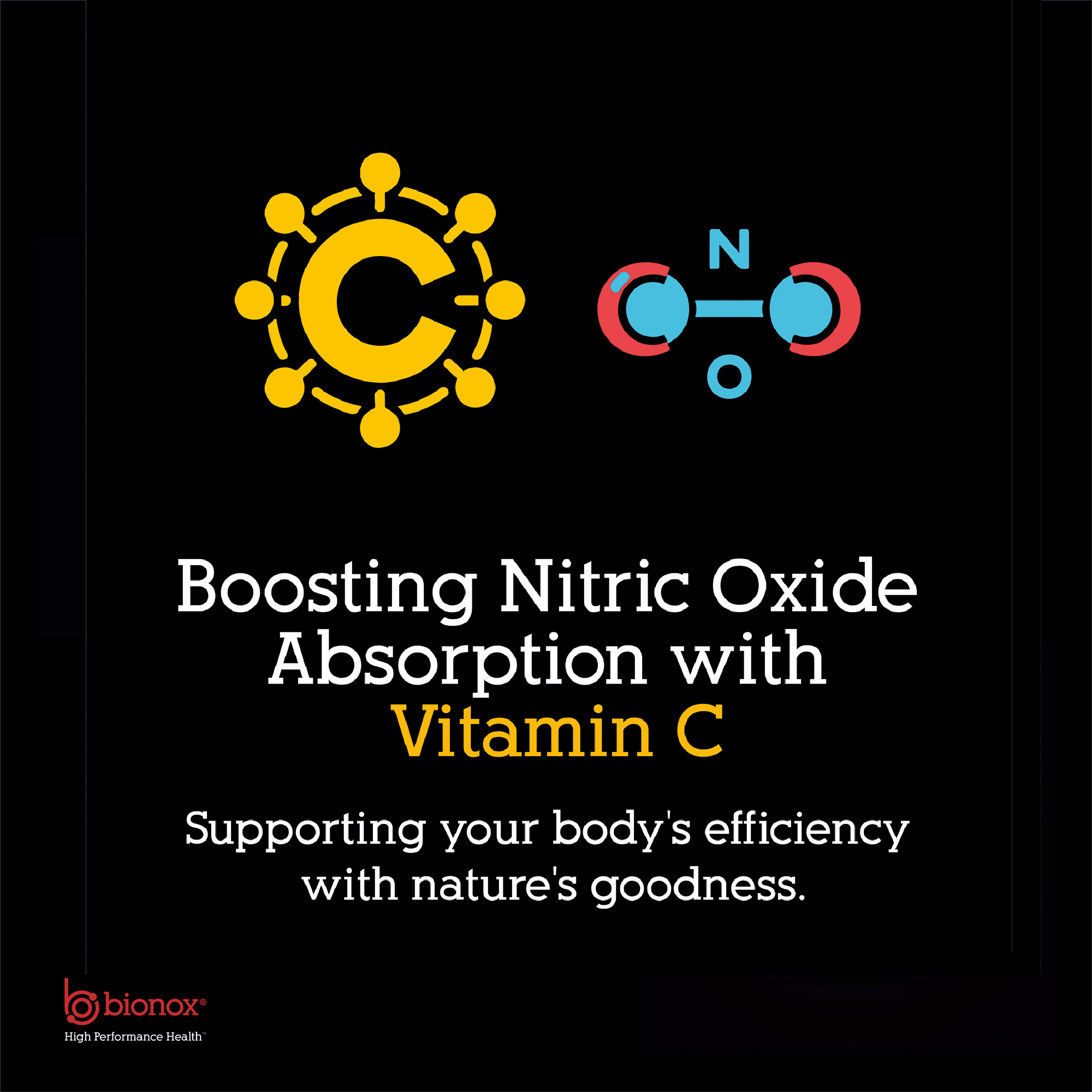
Vitamin K2 (MK-7)
While its role in nitric oxide production may not be as apparent as other vitamins, vitamin K2 contributes to cardiovascular health. It does so by preventing calcium deposition in the arteries. This action helps maintain arterial flexibility and function. There is emerging evidence that vitamin K2 may also support the endothelial function. This is is crucial for nitric oxide production and regulation. By promoting overall vascular health, vitamin K2 can indirectly support the optimal function of nitric oxide.
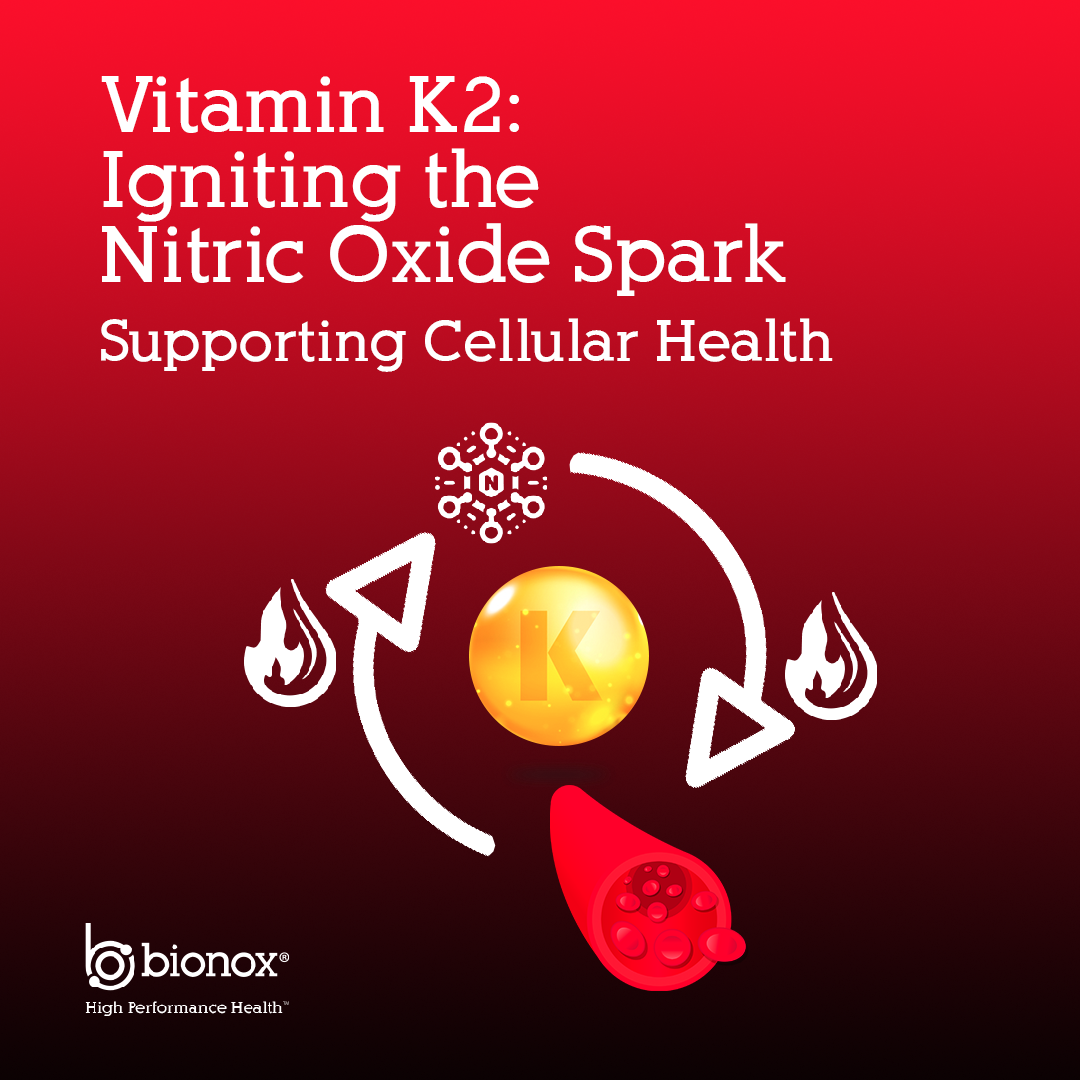
So, while arginine is a key precursor to nitric oxide its solo use can result in poor nitric oxide production. This is due to various physiological constraints, making it kind of a waste of money to take alone.
Combining arginine with citrulline and other vitamins can significantly enhance the production of nitric oxide. This strategic supplementation approach not only amplifies the cardiovascular benefits. It also supports broader health outcomes and benefits. This is done by ensuring efficient blood flow and nutrient delivery throughout the body and therefore more nitric oxide.
Reason 3: Inadequate Support for Vascular Health
Vascular health is fundamental to the overall well-being of the cardiovascular system, brain, gut, you name it. Healthy blood vessels are essential for the efficient transport of oxygen and nutrients to every part of the body. They also are vital for the removal of waste products, energy, vitality and pretty much everything.
Good vascular health also plays a critical role in preventing conditions such as atherosclerosis, hypertension, and PAD to name a few. While arginine is renowned for its capacity to enhance nitric oxide production and thus improve vasodilation and blood flow, relying on arginine alone might not offer comprehensive support for vascular health. This is because vascular health encompasses more than just the ability of blood vessels to dilate; it also includes the strength, elasticity, and integrity of the blood vessel walls.
Horse Chestnut
Enter the synergistic potential of combining arginine with horse chestnut (Aesculus hippocastanum), an herbal supplement known for its heart healthy properties. Horse chestnut can significantly enhance heart health. This amazing plant contains a compound called aescin. The active ingredients in aescin have been shown to strengthen capillary walls, reduce inflammation, and improve blood vessel tone. This can be particularly beneficial in conditions such as chronic venous insufficiency, where veins struggle to return blood to the heart efficiently.

The combination of arginine and horse chestnut works on multiple fronts to support vascular health. This is because of arginine’s role in nitric oxide production addresses the need for vasodilation and improved blood flow. Horse chestnut’s heart healthy and anti-inflammatory effects contribute to the structural health and functionality of the blood vessels.
Dual Action
This dual-action approach ensures that blood vessels are not only capable of adjusting their diameter for optimal blood flow but are also strong, resilient, and less prone to damage and inflammation.
Furthermore, the antioxidant properties of horse chestnut complement arginine’s cardiovascular benefits by protecting the endothelial cells lining the blood vessels. This protection can lead to stopping endothelial dysfunction, a precursor to atherosclerosis and other circulatory diseases. By stopping oxidative damage, the combination of arginine and horse chestnut supports the integrity of the inner veins, enhancing its capacity to produce nitric oxide and maintain vascular health.
In summary, while arginine alone offers significant benefits for enhancing nitric oxide production and improving vasodilation, it may not provide complete support for the multifaceted aspects of vascular health. Incorporating horse chestnut into a supplementation regimen that includes arginine can offer a more basic approach to maintaining and improving vascular health. This combination not only optimizes blood flow but also addresses the structural and functional needs of blood vessels, offering a comprehensive strategy for cardiovascular wellness.
Reason 4: Better Nitric Oxide Production with Vitamin D Supplementation: Stop Taking Arginine Alone
Vitamin D’s relationship with arginine extends beyond basic nutritional synergy, directly impacting the efficiency of nitric oxide (NO) synthesis and the activity of nitric oxide synthase (NOS), the enzyme responsible for NO production from arginine. This interaction is crucial for understanding how the combination of arginine and vitamin D can significantly amplify and promote cardiovascular health, immune function, and overall well-being.
Vitamin D has been shown to enhance the expression and activity of nitric oxide synthase, thereby increasing the conversion of arginine into nitric oxide and this increase in nitric oxide availability is vital for vasodilation, which improves blood flow and reduces blood pressure, supporting your heart.
More NO
The enhancement of NO production by vitamin D not only increases the heart health benefits provided by arginine but also supports the function of the inner lining of blood vessels, further protecting against arterial stiffness and cardiovascular disease.
The synergy between vitamin D and arginine in creating higher nitric oxide levels has broader health implications as well, especially for your immune system and bone health. Elevated NO levels can improve immune response by supporting the body’s defense mechanisms against diseases. Nitric oxide acts as a signaling molecule in the immune system, managing various processes involved in the immune response. Vitamin D, well-recognized for its role in supporting immune function and reducing inflammation, works in concert with arginine-derived NO to create a more effective immune response.
In terms of bone health, the improved blood flow resulting from increased nitric oxide production ensures that nutrients essential for bone maintenance, including calcium and phosphate, are efficiently delivered and utilized in the body.
Calcium Absorption
Vitamin D plays a direct role in calcium absorption and bone mineralization, making its combination with arginine a strategic approach to supporting skeletal health and heart health.
Arguing for the effectiveness of taking arginine with vitamin D rests on understanding these mechanisms as well as vitamin D’s ability to increase nitric oxide synthase and increase nitric oxide production from arginine. This provides a compelling reason to combine Vit D for improved health outcomes. This synergy not only enhances cardiovascular benefits by improving vascular function and reducing blood pressure but also supports robust immune function and contributes to the maintenance of healthy bones.
The combination of arginine and vitamin D offers a potent approach to health supplementation, with vitamin D significantly enhancing the conversion of arginine into nitric oxide and thereby amplifying the benefits of arginine supplementation. This partnership between vitamin D and arginine underscores the importance of a natural approach to supplementation, where the combined effects of nutrients are leveraged to achieve the best health outcomes.
Reason 5: Reduced Antioxidant Protection
Antioxidants play a pivotal role in safeguarding the body against oxidation, a condition characterized by an imbalance between free radicals and antioxidants. Free radicals are unstable molecules that can damage your cells, contributing to aging and various diseases, including cardiovascular disease, diabetes, and cancer, obviously things no one wants!
Antioxidants neutralize these nasty free radicals, thus protecting the body from damage. While arginine is known for its cardiovascular and immune system benefits, its antioxidant potential can be significantly improved when combined with vitamins E and C, both of which are powerful antioxidants. Also antioxidants make the nitric oxide molecule last longer, so they boost nitric oxides lifespan, and therefore effect! Yet another good reason you want to stop taking arginine by itself!
Vitamin E
Vitamin E is a fat-soluble antioxidant that protects cell membranes from cellular damage by reacting with free radicals, which prevents the propagation of free radical damage within the body. This vitamin is particularly effective in protecting against lipid peroxidation, a process that can compromise cell membrane integrity and function. By maintaining cell membrane health, vitamin E supports the optimal functioning of cells, including those involved in the synthesis and utilization of arginine.
Vitamin C, a water-soluble antioxidant, complements vitamin E by neutralizing free radicals in the aqueous environments of the body. Furthermore, vitamin C can regenerate oxidized vitamin E, thereby restoring its antioxidant capacity making this a synergistic interaction that enhances the body’s overall antioxidant defense system.
Vitamin C
Vitamin C also plays a crucial role in the synthesis of collagen, a protein essential for the maintenance of blood vessels, skin, and connective tissues. The presence of adequate vitamin C can thus support the structural health of blood vessels, ensuring a conducive environment for arginine’s cardiovascular benefits.
The combination of arginine with vitamins E and C offers a multi-faceted approach to combating oxidative stress and supporting your health. Arginine, through its role in nitric oxide production, can improve vascular health and support the delivery of nutrients, including antioxidants, to tissues throughout the body while, vitamins E and C directly neutralize free radicals and protect against cellular damage. This collective action increases the antioxidant potential of these nutrients and also enhances their individual benefits. These benefits being mostly related to cardiovascular health, immune function, and tissue repair.
Advocating for the combination of arginine with vitamins E and C is grounded in the understanding that optimal personal health outcomes are often achieved through synergistic nutritional strategies.
This approach leverages the complementary actions of arginine and antioxidants to fortify the body’s defenses against disease, thereby supporting overall health and well-being.
By incorporating these nutrients into a comprehensive supplementation regimen, you can harness a more potent antioxidant defense, offering broader protection against damage and its associated health risks.

Greens and Oral Health
Greens and Oral Health go hand in hand. Lear why below!
In the quest for optimal oral health, the importance of diet often takes a backseat to routine dental hygiene practices. Things such as brushing, flossing, and using mouthwash use. We rarely think about how our food can benefit oral health. Sure we know sugar is bad for oral health, but what about foods that prevent oral diseases and issues?
Emerging research suggests that what we eat is super important. This is particularly so for leafy greens, as they can play a crucial role in maintaining a healthy mouth. This article delves into the mechanisms through which leafy greens contribute to oral health, effectively acting as a natural mouthwash and preventative measure.
The Science Behind Leafy Greens and Oral Health
Leafy greens, including spinach, kale, arugula and lettuce, are rich in essential vitamins, minerals, and phytonutrients. Greens offer a plethora of health benefits. One of the key components found in leafy greens is dietary nitrates, which the body converts into nitric oxide. Nitric oxide has been shown to support opening and healing of the arteries and veins and blood flow. Its benefits extend much further however, particularly to the realm of oral health.
Amazing Nitrates
The nitrates found in leafy greens are a natural way to boost nitric oxide (NO) levels in the body. When consumed, these nitrates are converted by bacteria in the mouth and further in the stomach into nitrites. Eventually, the body converts these nitrites into nitric oxide. This process enhances blood flow, supports muscle function, and improves cardiovascular health by dilating blood vessels. Open blood vessels in turn lowers blood pressure and promotes circulation. Similarly, the consumption of certain amino acids, notably L-arginine and L-citrulline, found in foods like nuts, seeds, and meats, also promotes the production of nitric oxide. These amino acids are directly utilized by the body’s enzymatic pathways to synthesize NO, aiding in similar health benefits as those obtained from nitrates, including improved circulation and oxygen delivery to tissues.
The Two Paths To Nitric Oxide: Amino Acids & Nitrates

Mechanisms of Action: How Greens Helps Your Mouth
-
Saliva Production: Chewing leafy greens stimulates saliva production, which is the mouth’s natural way of cleaning. Saliva helps wash away food particles and neutralize acids produced by bacteria, thus protecting the teeth from decay and other similar bad things.
-
Antimicrobial Properties: Certain compounds in leafy greens possess antimicrobial properties that can combat oral pathogens. By inhibiting the growth of bacteria responsible for plaque formation and gum disease, leafy greens contribute to a healthier oral microbiome and better breath!
-
Anti-inflammatory Effects: The high levels of antioxidants and vitamins in leafy greens, such as vitamin C and E, can reduce inflammation in the gums, a key marker of gum disease.
-
Alkalizing Effect: Leafy greens help balance the pH levels in the mouth, creating an environment less conducive to harmful bacteria that thrive in acidic conditions.
Research Insights
Recent studies have highlighted the potential of leafy greens in promoting oral health. For instance, recent research has indicated that dietary nitrates in leafy greens can reduce the risk of gum disease. Furthermore, the fibrous texture of greens can aid in mechanically cleaning the teeth, similar to the action of brushing. Who needs a toothbrush when you have kale?
Incorporating Leafy Greens into Your Diet for Oral Health
Embracing leafy greens for oral health is simple and can be delicious. Here are some tips on how to incorporate them into your daily life:
-
Salads: A no-brainer way to consume more leafy greens. Experiment with different types of greens to keep things interesting.
-
Smoothies: Adding a handful of spinach or kale to your morning smoothie is an easy way to boost your intake.
-
Cooked Dishes: Incorporate greens into soups, stews, and stir-fries. Cooking can make certain nutrients more bioavailable.
-
Snacks: Kale chips or lightly steamed greens seasoned with herbs can be a healthy and tooth-friendly snack option.
In Conclusion
While not a replacement for traditional oral hygiene practices, incorporating leafy greens into your diet offers a complementary approach to maintaining oral health while at the same time supporting your heat health. Their natural antimicrobial, anti-inflammatory, and saliva-stimulating properties work synergistically to keep the mouth clean and healthy, akin to the benefits of using mouthwash. As research continues to uncover the intricate connections between diet and oral health, it’s clear that leafy greens are a powerful ally in the quest for a healthy mouth.
In the spirit of holistic health, embracing a diet rich in leafy greens is a simple yet effective step toward not just oral health, but overall well-being.
L-Arginine and Glaucoma and Nitric Oxide

Lets talk about L-Arginine and Glaucoma.
L-Arginine is a semi-essential amino acid known for its role in synthesizing nitric oxide and for cardiovascular health. Recently it has gained attention for its potential benefits in eye health. Of import are it’s roles in managing conditions like glaucoma and nonarteritic ischemic optic neuropathy (rNAION). Because of recent updates in science, we felt in necessary to update our reads on the advancements.
This article will be delving into the recent studies that illuminate Arginine’s promising role in these common eye conditions. We also are looking into how L-Arginine and Glaucoma are linked. Because our products focus on Nitric Oxide, we feel our readers need to understand these potential benefits.
L-Arginine’s Mechanism in the Eye
Arginine is converted into nitric oxide (NO) by nitric oxide synthase in the body. NO plays a crucial role in ocular health, particularly in regulating intraocular pressure (IOP) and blood flow to the optic nerve. It is known to be an ocular hypotensive agent. This suggests it has great potential in managing conditions like glaucoma, where IOP is a critical factor.
Impact on Intraocular Pressure and Glaucoma
A recent study on human eyes showed that L-Arginine significantly reduced the mean Intraocular Pressure (IOP) during infusion. Researchers attribute this decrease mainly to Nitric Oxide (NO) formation. However, IOP rose after the infusion stopped, suggesting the effect is temporary. This result is crucial for glaucoma management. L-Arginine and Glaucoma are linked and are a potentially intriguing combination of nutritional element versus disease.
Broader Implications for Glaucoma
In 2002, Finnish researchers evaluated L-Arginine in reducing eye pressure in glaucoma patients. They found that L-Arginine-nitric oxide supplementation led to a drop in eye pressure. Similarly, in 2007, Austrian researchers studied its effect not on eye pressure but on the rate of blood flow reaching the optic nerve. Because of this study they discovered that the nitric oxide created from L-Arginine improved blood flow to the nerve. This shows promise in reducing the risk of nerve damage. However, as of 2011, L-Arginine was not yet a recognized treatment for optic nerve damage.
L-Arginine in rNAION Treatment
rNAION, characterized by a sudden, painless loss of vision, is associated with poor blood flow to the optic nerve. A study explored the effectiveness of L-Arginine in a rodent model of rNAION. Both intravenous infusion after rNAION induction and oral pretreatment with L-Arginine significantly decreased optic disc edema in the acute stage and reduced the thinning of the inner retina, as well as the decrease in the number of retinal ganglion cells (RGCs). This indicates that L-Arginine can reduce anatomical changes in the eye and improve visual function in the acute stage of rNAION.
Practical Considerations and Future Research
Future research is necessary to establish definitive guidelines for its use in various eye conditions. The potential of L-Arginine in eye health, as evidenced by these studies, is significant, but further clinical trials and investigations are crucial to fully understand and harness its benefits.
In Conclusion
L-Arginine presents a promising avenue for the management and treatment of eye conditions. Particularly glaucoma and rNAION. While current studies offer promising results, the full potential of L-Arginine in eye health remains to be unlocked through further research. Its role in synthesizing nitric oxide and improving blood flow and pressure within the eye points towards a future where it could become a key component in eye health management strategies.
References
- “The effect of L-arginine on intraocular pressure in the human eye” – https://pubmed.ncbi.nlm.nih.gov/10980664/.
- “L-Arginine and Glaucoma” – https://healthfully.com/l-arginine-and-glaucoma-7433644.html
- “Effects of L-arginine on anatomical and electrophysiological deterioration of the eye in a rodent model of nonarteritic ischemic optic neuropathy” – https://pubmed.ncbi.nlm.nih.gov/23712653/
The Horse Chestnut For Heart Health: A Historical and Therapeutic Overview
Introduction
The horse chestnut, an important ingredient in many heart and circulation support formulas today. It is commonly used for promoting heart health. Its scientific name is Aesculus hippocastanum and is so much more than just the big tree you may have seen in a park. This article delves into the fascinating journey of the horse chestnut. We will be tracing its roots from historical significance to its role in today’s health practices. Our focus will be particularly in the realm of heart support.
The horse chestnut is known for its distinctive spiny fruits and brown seeds. They are often playfully referred to as “conkers”. The horse chestnut is significant in various cultures and traditional practices. Its story is rich with folklore, medicinal applications, and a longstanding presence in human history.
Ancient Remedies
We will explore how these historical uses have turned into modern medicinal applications. Also, we will be shedding light on this remarkable tree’s enduring relevance. Our aim will be helping you understand when and how to use it and explain its heart supporting role.
From ancient remedies and cures to current scientific research it has a long history of use. The horse chestnut’s journey is a testament to the interplay between nature and human health. This introduction sets the stage for a comprehensive exploration of the horse chestnut’s popular use. Its promising future in supporting heart health is also of interest.

Origins and Taxonomy
The horse chestnut, known scientifically as Aesculus hippocastanum, is a tree that has captivated attention both for its beauty and its medicinal properties. In this section, we delve into its scientific classification and origins. We will be tracing the journey of this remarkable tree from then old times to present. Horse Chestnut has widespread distribution across various landscapes worldwide. Here is a little more about it:
Scientific Classification
- Kingdom: Plantae – Denoting its status as a plant.
- Clade: Angiosperms and Eudicots – Indicating it’s a flowering plant with a specific seed structure.
- Order: Sapindales – A group known for species like maples and lychee.
- Family: Sapindaceae – A family that includes a variety of flowering plants.
- Genus: Aesculus – This genus comprises all horse chestnut species.
- Species: A. hippocastanum – The specific scientific name for the horse chestnut.
Origins
The horse chestnut likely originated from the Balkan Peninsula in Southeast Europe. It was not native to the British Isles but arrived there in the late 16th century. After its introduction, it quickly gained popularity worldwide for its ornamental value and natural beauty.
Geographic Distribution and Natural Habitat
The horse chestnut first appeared in the mountainous regions of Greece and Albania. It has since been widely cultivated across Europe and other parts of the world. Its ability to adapt to different soil types and climates has led to its widespread cultivation and use. Today, you can find it in temperate regions of Europe, North America, and parts of Asia.
In its natural habitat, the horse chestnut prefers moist, fertile soils. It commonly populates parklands and large gardens. It thrives in full sun but also tolerates semi-shaded areas. This makes it a highly adaptable species for various landscapes and locations.
This tree’s journey from the mountainous regions of the Balkans to its present-day global presence is a story of botanical migration. It is also one of human appreciation for its aesthetic and practical value. The horse chestnut’s adaptability not only to different terrains but also to cultural uses is significance. It underscores its role as a botanical traveler and a cherished component of the natural world.
Historical Uses and Cultural Significance
The horse chestnut tree has a rich tapestry of uses and significance woven through its rich history. This section explores its traditional roles in folk medicine, its cultural impact across different regions, and how its usage has evolved over time.
Traditional Uses in Folk Medicine and Early Medicine
Early Medicinal Applications
People traditionally used various parts of the horse chestnut tree, especially the seeds, leaves, and bark, in folk remedies across different regions. Practitioners highly valued the seeds for their effectiveness in treating varicose veins and hemorrhoids. Folk practitioners also turned to horse chestnut for its anti-inflammatory properties to reduce pain and swelling. This makes it a popular ingredient in many excellent nitric oxide products, as inflammation in the arteries can harm your heart. In some cultures, people used the tree’s components to address respiratory issues and fever. This is important since pulmonary and heart health are closely linked.
Cultural Significance in Different Regions
Europe: In its native Balkans and across Europe, the horse chestnut symbolizes strength and endurance. Its blossoming signaled the arrival of spring and featured prominently in local folklore.
British Isles: After its introduction, it became a staple in British gardens and parks, with ‘conkers’ becoming a cultural staple among children.
North America: Introduced later in North America, the tree is appreciated for its ornamental value, adding aesthetic beauty to parks and streets, just as in Europe.
Evolution in Usage Over Time
- From Folk Remedy to Scientific Study: The transition of horse chestnut from a folk remedy to a subject of scientific research marks a significant evolution. Modern medicine has taken interest in its active compound, aescin, for its potential therapeutic benefits.
- Contemporary Herbal Medicine: Today, horse chestnut extracts are widely used in herbal medicine, especially in Europe, for treating circulatory problems. They are increasing in use in the US as well, and form an important part of many heart health products.
- Changing Perceptions: The perception of the horse chestnut has shifted from a common tree to a valuable medicinal resource, with ongoing research exploring new therapeutic applications and tons of products, including its use today.
This historical journey of the horse chestnut, from traditional folk medicine to contemporary medicinal applications for blood pressure and heart support, highlights its therapeutic potential and cultural resonance across different European societies. China on the other hand merrits its own section and we will discuss that below.

The Use of Horse Chestnut in Traditional Chinese Medicine
The use of horse chestnut in Traditional Chinese Medicine (TCM) involves several species related to the European horse chestnut (Aesculus hippocastanum), most notably Aesculus chinensis and Aesculus wilsonii.
These species have been used in TCM for various health concerns, particularly their properties in improving circulation and reducing inflammation, which are vital components of heart health. Here’s a detailed overview of their use in TCM:
When and How It Started:
- Historical Roots: The exact origins of using horse chestnut in TCM are not well-documented, but it likely dates back centuries, as TCM has a long history of using a wide array of plant-based remedies.
- Integration into TCM: These species were integrated into the extensive list of herbal cures of Chinese Medicine, noted for their unique properties aligning with TCM’s natural approach to health.
Who Used It:
- TCM Practitioners: Chinese doctors and herbalists have used parts of the horse chestnut tree, including seeds, leaves, and bark, for various treatments.
- Common Usage: It was used by individuals seeking traditional remedies for ailments related to circulation, inflammation, and other related health issues.
Medicinal Uses and Why:
Circulatory Health:
Blood Movement and Stasis: Horse chestnut species in TCM are known for their ability to move and tonify blood, and remove stasis. This makes them useful for conditions like thrombosis and hemorrhoids.
Treating Venous Disorders: They are particularly effective in treating conditions related to venous insufficiency, such as varicose veins and leg cramps.
Other Health Benefits:
Anti-inflammatory: Used to reduce edema and bloating and to treat conditions like rheumatism and neuralgia.
Respiratory and Digestive Health: People use them as an expectorant for respiratory problems and to alleviate abdominal pain.
Women’s Health: People use the seeds and other parts to moderate menses, stop excessive uterine bleeding, and alleviate premenstrual symptoms.
How It’s Used:
Various Forms: Horse chestnut in TCM is being used in different forms, including extracts, oils, and as part of herbal mixtures.
External and Internal Applications: Applying it externally is also possible (like oils for rheumatism) or taken internally for systemic health issues.
Cultural Context:
Holistic Approach: In TCM, the use of horse chestnut is not just about treating specific ailments but is integrated into a natural approach to health, balancing the body’s Qi, and aligning with the principles of Yin and Yang.
This overview shows how horse chestnut species have been adopted and utilized in TCM, reflecting the system’s rich tradition of herbal medicine and its more basic approach to health and wellness.
Cardiovascular Support and Medical Research Today
Therapeutic Properties
Mechanisms of Action in Heart Health: How it works!
Venotonic Effect: Horse chestnut strengthens veins, increasing their elasticity and tone. This is crucial for health of the heart. Improved vein elasticity positively impacts blood pressure and heart health. It does so by improving blood flow to the heart. The helps by reducing the risk of conditions like venous insufficiency and varicose veins and so much more.
This efficiency in the venous system reduces the workload on the heart and can help maintain healthier blood pressure levels. Additionally, more elastic veins are less prone to blood clot formation. This is crucial for stopping some serious health issues. Among the most common is deep vein thrombosis. Overall, the health of veins is a key component in the broader picture of cardiovascular wellness.
Reducing Venous Return: It helps reduce the return of blood from veins in the legs to the heart, thereby decreasing venous pressure and swelling.
Anti-inflammatory Properties: It reduces inflammation in the veins, a key factor in many diseases.
Anti-inflammatory and Venotonic Effects:
Reduction of Edema: The anti-inflammatory properties help reduce swelling and edema, often associated with poor circulatory health.
Improving Blood Flow: By toning veins, horse chestnut improves overall blood flow, a vital aspect of heart wellness.
Clinical Studies and Research
Summary of Significant Studies:
Studies have shown that horse chestnut extract effectively reduces symptoms of chronic venous insufficiency. These include swelling, pain, and fatigue in the legs.
Research indicates its effectiveness in treating varicose veins, similar to compression stockings.
Comparative Analysis with Conventional Treatments:
Horse chestnut extract is similar to other treatments like compression therapy. In tests, giving favorable results in terms of efficacy and patient compliance.
Other Medicinal Uses
Broader Medicinal Applications
Use in Treating Venous Insufficiency and Varicose Veins:
Beyond cardio support, people today are using it for the treatment of venous insufficiency and varicose veins.
Potential Benefits for Other Health Conditions:
It may also be beneficial for hemorrhoids, post surgery edema, and as a potential anti-inflammatory agent for joint pain.
Safety and Side Effects
Potential Side Effects and Contraindications:
Common side effects are dizziness, headache, and gastrointestinal upset.
Individuals with liver or kidney disease, or pregnant or breastfeeding women, should not use it without medical advice.
Guidelines for Safe Usage:
Users should adhere to the recommended dosage and use it long-term only under a doctors guidance.
As with any supplement, individuals should use it as part of an overall health plan, not as the sole treatment for serious conditions.
In summary, both historical use and modern clinical studies support the applications of horse chestnut in heart health and beyond.
Its efficacy, particularly in venous conditions, is a valuable addition to herbal medicine. However, like any therapeutic agent, understanding its safety profile and potential interactions is crucial for its responsible use.
Ultimate Nitric Oxide Nutrition With Horse Chestnut
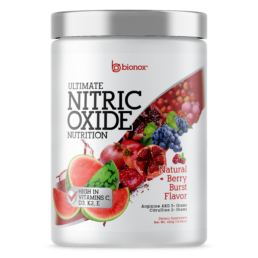
How to Choose A Good Beetroot Supplement
Are you searching for a good beetroot supplement that delivers real results? Look no further than Beetroot Energy by Bionox!
In the world of heart health and blood pressure support supplements, not all products are created equal, especially beetroot products. Many beetroot powders on the market boast health benefits but fall short due to their negligible nitrate content, the very compound that makes beetroot a super-food.
What are nitrates?
Nitrates are naturally occurring compounds found in the soil and water that plants often absorb as they grow. In vegetables like beets, spinach, and arugula, nitrates are beneficial because they convert to nitric oxide in the body, which helps to relax and dilate blood vessels, improving blood flow and reducing blood pressure just to name a few of the many many amazing things it can do.
This can enhance exercise performance and cardiovascular health and so much more.
Nitrates In Bacon
In processed meats like bacon, added nitrates can form nitrosamines during high-heat cooking, which are potentially carcinogenic. This is not the same as the nitsates in beets. Consuming high amounts of these types of nitrates can increase the risk of diseases, including certain types of cancer. The key difference is in the formation of harmful compounds in processed meats, as opposed to the beneficial nitric oxide produced from vegetable nitrates.
Our Natural Nitrates
Beetroot Energy stands out from the crowd of junk beetroot products. Unlike cheaper powders that often contain little to no natural nitrates, Beetroot Energy guarantees a full 100mg of healthy, natural beetroot nitrates in every serving.
Natural nitrates are the powerhouse behind beetroot’s health-boosting properties, especially known for enhancing blood flow, improving stamina, and supporting cardiovascular health, they are a health promoting powerhouse for your body.
Unlike synthetic nitrates as mentioned above, which are commonly found in processed meats and have a notorious reputation for health risks, the natural nitrates in Beetroot Energy are derived from beets grown in nitrate-rich soil, ensuring their efficacy and safety. With Beetroot Energy, you don’t just get a supplement; you get the full spectrum of beetroot’s advantages in a delicious, convenient cherry tart that requires no preparation or mixing.
Potent Natural NO Simulators
Beetroot Energy’s nitrate-rich formula is designed to increase vasodilation, enhancing not just muscle strength and endurance but also promoting better skin tone and cognitive function. It’s a versatile supplement that fits seamlessly into your daily routine, providing sustained energy whether you’re at the gym or powering through your workday.
In the health and wellness world, many of the most poorly made beetroot supplements are lauded for their potential benefits, including improved stamina and cardiovascular health. While it’s true beetroot can do those things, their cheap products lack the critical element that makes those things happen.
The critical factor often overlooked in these supplements: the actual nitrate content. Nitrates as mentioned already are the powerhouse behind beetroot’s health benefits, and unfortunately, many supplements on the market fall short in delivering these vital compounds.
Understanding Beetroot Supplements: The Nitrate Dilemma Different farming methods product different amounts on nitrates. The care, feeding and growing of higher nitrate beets costs more money, so most companies do not use these more expensive beets. They use beets with almost ZERO nitrates content.
The Low Down on Junk Beetroot Supps
Capsules
- Capsules are a popular form of beetroot supplements, convenient for those on the go. However, many of these capsules contain merely dried and ground beetroot, which significantly lacks in nitrate content compared to fresh or properly processed and grown options. Look to see if you can see nitrate amount listed on package. You almost never will. Why? Because it’s ZERO, ZILCH.
Powders
- Beetroot powders are another common supplement choice for many. Marketed for their ease of use in shakes and smoothies, they suffer a similar fate to capsules. The drying process can reduce nitrate levels, and some brands add fillers, further diluting the potential health benefits.
Drinks
- Ready-to-drink beetroot juices and concentrates might seem like a good source of nitrates, but the devil is in the details. Many of these drinks are not only diluted but also contain added sugars and preservatives, undermining the nutritional value of the beetroot itself.
The Inconvenient Truth: Beetroot as a Filler
- Beetroot’s cost-effectiveness has led to its use as a filler ingredient, even in products like dog food. This speaks volumes about its abundance and affordability but raises questions about the quality and efficacy of beetroot in many supplements. THis dog food grade beetroot is what most companies are selling you!
Seeking Genuine Nutrition: What to Look for in Beetroot Supplements
- When searching for a beetroot supplement, the key is to look for products that specify their nitrate content. Supplements that use concentrated beetroot extract or those processed to retain nitrates are more likely to deliver the health benefits associated with beetroot.
The world of beetroot supplements is riddled with products that capitalize on the vegetable’s healthy image without delivering its full benefits. As consumers, it’s crucial to understand the difference between mere beetroot presence and the actual delivery of nitrates. By choosing supplements with specified nitrate content, we can ensure that we’re not just falling for marketing hype but genuinely investing in our health.
Use The Right Kind Of Beets!
Many people find it challenging to incorporate beetroot into their diets due to its strong, sometimes nasty, earthy taste which can be quite overpowering. This can make it hard for some to enjoy the benefits of beetroot, despite its terrific and powerful health advantages.
Bionox’s Beetroot Energy lozenges, referred to as tarts, offer a palatable alternative. They are infused with a natural cherry flavor that transforms the typically robust taste of beetroot into a delightful treat. This makes it easier and more enjoyable for individuals to consume beetroot and gain its cardiovascular and endurance benefits without having to deal with its naturally strong flavor.
When to take Beetroot Energy?
The best time to take Beetroot Energy tarts is in between meals, perhaps 20 minutes before or after eating. This timing allows the body to optimally break down the beneficial ingredients in Beetroot Energy for maximum absorption. Taking apple cider vinegar before consuming may also help according to some research.
Is It Safe?
Beetroot Energy tarts are safe for most individuals, unless you have an allergy to beets, they present a clean and easy way to support your health.
Are There Studies on Beetroot?
Regarding studies, nitrates found in vegetables like beetroot have been studied extensively. Research suggests that dietary nitrates can lower blood pressure, improve athletic performance, and enhance blood flow due to their conversion to nitric oxide in the body.
Here are some links to a few studies on nitrates.
Increasing vegetable intake to obtain the health promoting and ergogenic effects of dietary nitrate” from the European Journal of Clinical Nutrition: Study Link. This study discusses the benefits of increased dietary nitrate intake from vegetables, highlighting its cardio-protective effects and improvement in exercise performance.
Nitrate containing vegetables and dietary nitrate and nonalcoholic fatty liver disease: a case control study” from the Nutrition Journal: Study Link. This study explores the relationship between dietary nitrate intake from vegetables and nonalcoholic fatty liver disease.
Nitric Oxide & Dietary Nitrate: Another Reason to Eat Your Vegetables” – Center for Nutrition Studies: Study Link. This article discusses the relationship between dietary nitrate and nitric oxide, emphasizing the importance of eating vegetables for health benefits.
When it comes to choosing a Good Beetroot Supplement, it’s essential to consider the nitrate content, as this is the key component that contributes to the health benefits of beetroot. Many products on the market claim to offer the advantages of beetroot, but few deliver the necessary nitrate levels. In our comprehensive guide, we’ll explore what makes a beetroot supplement effective and how to identify the ones that truly offer the benefits they claim.
Choosing the Right Beetroot Supplement
Benefits
Increased and sustained energy
Supports increased strength and endurance
Oxalate free, natural, tested and safe
Increases vasodilation for harder, more vascular-looking muscles (great for gym pumps)
Increased blood flow supports improvements in health, cognition, and skin tone and tightness
Convenience and Taste
Unlike beetroot powders, Beetroot Energy is an easy-to-use, delicious cherry tart that requires no mixing or preparation. Our natural cherry flavor is fantastic and is loved by our customers!
A Personalized Heart Health Diet and Supplement Guide
Heart Health Diet Guide.
Introduction to the Heart Health Diet: Basics and Benefits
Preventing heart disease is significantly easier and more effective than treating it once it’s completely developed in your body. This is a crucial point to understand, as heart disease remains a leading cause of disease and mortality worldwide. One of the most powerful tools in preventing heart disease is, as you may already know, a healthy diet. Making simple dietary changes can also have a profound impact on your heart health.
Firstly, prevention is key because once heart disease sets in, treatment can become complex and challenging. It often involves long-term risky medication, difficult lifestyle adjustments, and, in severe cases, surgical interventions. The financial, physical, and emotional costs of treating heart disease are high. This is true not just for the individual, but also for their families and the healthcare system.
In contrast, preventive measures, particularly through diet, are relatively simple and accessible. A heart-healthy diet includes many fruits, vegetables, whole grains, and lean proteins. It also means limiting the intake of processed foods, sugars, and unhealthy fats. Incorporating such foods into your diet can help maintain a healthy weight. They help lower cholesterol levels, reduce blood pressure, and decrease the risk of type 2 diabetes—all contributing factors to heart disease.
Moreover, adopting a heart-healthy diet doesn’t have to be a drastic or unenjoyable change. It’s about making smarter food choices and being mindful of portion sizes. Simple swaps like choosing whole grains over refined ones or choosing fish or plant-based proteins instead of red meat can make a big difference.
Important Choices
The choices we make in our diet not only affect our present health but also determine our risk for heart disease in the future. It’s about creating a sustainable and enjoyable eating pattern that supports heart health over a lifetime. Prioritizing a heart-healthy diet is an investment in your long-term health. This is so because it is better to manage heart disease before as opposed to after it has developed.
Regarding heart-healthy diets, the key is to focus on foods that support cardiovascular health while being mindful of those that could be harmful. It’s important to note that some seed oils, often considered healthy, can be inflammatory. This is a nuanced area, and opinions differ, but it’s something to consider when choosing fats in your diet.
Things You Can Do
- Caloric Balance and Physical Activity: Balancing calories is fundamental. Consuming as many calories as you burn is key to maintaining a healthy weight. Regular physical activity, as recommended by the American Heart Association, includes at least 150 minutes of moderate activity or 75 minutes of vigorous activity weekly, along with muscle-strengthening activities.
- Healthy Dietary Pattern: Emphasizing a variety of fruits and vegetables, whole grains, and healthy proteins is crucial. While liquid non-tropical vegetable oils are often recommended, there’s a growing discussion about the inflammatory potential of some seed oils. It’s advisable to focus on fats known for their health benefits, like olive oil and omega-3 rich fish oils.
- Proteins: Choosing lean meats, poultry, fish, low-fat dairy products, eggs, and plant-based proteins like legumes and soy products is recommended. Fish rich in omega-3 fatty acids are particularly beneficial.
- Reducing Inflammatory Foods: While unsaturated fats from vegetable oils are often recommended, it’s important to consider the potential inflammatory effects of certain seed oils. Opting for oils known for their anti-inflammatory properties, such as olive oil, can be a better choice.
- Salt (Sodium) Intake: High salt consumption is linked to hypertension, a major risk factor for heart disease. The American Heart Association suggests limiting sodium to no more than 2,300 milligrams per day.
- Heart-Healthy Foods: A heart-healthy diet includes a variety of nonstarchy vegetables, fruits, whole grains, lean meats, and seafood. Foods rich in omega-3 fatty acids, like flaxseeds and walnuts, are also beneficial.
- Diet Plans: Popular heart-healthy diets like the Mediterranean, DASH, and Vegetarian diets emphasize fresh whole foods. They also limit processed and high-fat foods. The Mediterranean Diet, in particular, has been linked to various health benefits. The least of which is a reduced risk of heart disease.
Diet Is Key
When considering your diet, it’s essential to consult with healthcare professionals to ensure it’s appropriate for your individual health needs. The debate around seed oils and inflammation is ongoing, and staying informed about the latest research is key.
For more detailed information, you can refer to the following sources:
- American Heart Association Diet and Lifestyle Recommendations: American Heart Association
- Heart-healthy diet tips: Mayo Clinic
- Details on what constitutes a heart-healthy diet: Houston Methodist
- Overview of heart-healthy diets: CardioSmart – American College of Cardiology
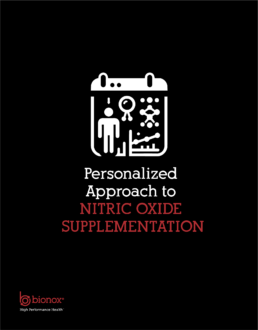
The Role of Nitric Oxide in Heart Health
Nitric oxide (NO) is crucial in maintaining heart health, acting as a key regulatory molecule in the cardiovascular system. Its importance can’t be overstated, and understanding its functions can provide insights into how lifestyle and dietary choices can influence heart health.
Nitric oxide is a vasodilator, meaning it helps relax and widen blood vessels, improving blood flow and reducing blood pressure. This is critical for preventing conditions like atherosclerosis (the hardening of arteries). Why? Because atherosclerosis is a major risk factor for heart attacks and strokes.
One of the fascinating aspects of nitric oxide is its production within the body. It’s synthesized from L-arginine, an amino acid, by the enzyme nitric oxide synthase. L-Citrulline can also have the same effect. This process can be influenced by various factors, including diet and exercise. Foods rich in nitrates, such as beets and leafy greens, can boost nitric oxide levels. Additionally, regular physical activity has enhanced the body’s ability to produce nitric oxide.
Diminishing Returns
With age and certain health conditions and foods, the production of nitric oxide can diminish. This is bad, leading to an increased risk of cardiovascular diseases, high blood pressure, and more. This makes it even more important to focus on nitric oxide-boosting habits as part of a heart-healthy lifestyle.
The role of nitric oxide extends beyond just vasodilation. It also has anti-inflammatory and antiplatelet properties. These properties further protect against the development of heart diseases. By preventing platelet aggregation and adhesion, nitric oxide helps reduce the risk of blood clots forming within the arteries.
Nitric Oxide Is Vital
Nitric oxide is a vital molecule for cardiovascular health, influencing blood pressure, blood flow, and overall heart function. A heart-healthy lifestyle that includes a diet rich in nitric oxide-boosting foods and regular exercise can help maintain optimal levels of this crucial molecule.
For more detailed information, you can refer to the following sources:
- American Heart Association: Nitric Oxide and Heart Health
- National Institutes of Health: Nitric Oxide and Cardiovascular Health
- Journal of Nutrition: Dietary Sources and Bioactivities of Nitric Oxide
These sources offer in-depth insights into the role of nitric oxide in heart health and how it can be influenced by diet and lifestyle.
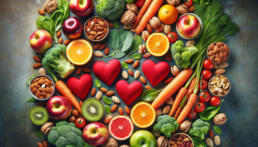
When it comes to maintaining a heart-healthy diet, the type of protein you consume is just as important as the quantity. Incorporating a variety of lean proteins into your diet is not only beneficial for heart health but also contributes to overall well-being. Here’s a deeper look into why choosing lean meats, poultry, fish, low-fat dairy products, eggs, and plant-based proteins is essential for heart health.
Foods For A Heart Health Diet
Lean Meats and Poultry: Lean meats, particularly cuts that are lower in saturated fat, can be a healthy part of your diet. For instance, choosing skinless chicken or turkey breasts over fattier cuts or processed meats can significantly reduce your intake of unhealthy fats.
Fish – A Heart-Healthy Choice: Fish, especially those rich in omega-3 fatty acids like salmon, mackerel, and herring, are particularly beneficial for heart health. Omega-3 fatty acids are known for their role in reducing inflammation throughout the body, lowering blood pressure, decreasing triglyceride levels, and even reducing the risk of stroke and heart failure. The American Heart Association recommends eating two servings of fish per week, particularly fatty fish, for these benefits.
Dairy Options
Low-Fat Dairy Products: Dairy products are good sources of protein and other essential nutrients. Opting for low-fat or fat-free dairy options helps reduce the intake of saturated fats. These fats are known to raise LDL (bad) cholesterol levels. Products like skim or 1% milk, low-fat yogurt, and cheese are healthier choices that contribute to a balanced diet.
Eggs: Once controversial due to their cholesterol content, eggs are now considered part of a heart-healthy diet. They are a versatile source of high-quality protein and contain various essential nutrients.
Plant-Based Proteins: For those looking to reduce their meat intake, plant-based proteins offer an excellent alternative. Legumes (beans, lentils, chickpeas) and soy products (tofu, tempeh, soy milk) are not only good protein sources but also contain fiber, vitamins, and minerals. These foods can lower cholesterol levels and are associated with a reduced risk of heart disease.
In Conclusion
In conclusion, varying your protein sources and focusing on lean meats, fish rich in omega-3 fatty acids, low-fat dairy, eggs, and plant-based proteins can significantly impact your heart health. This approach offers a balanced intake of essential nutrients while minimizing the risk factors associated with heart disease.
For more detailed information, check out the following sources:
- American Heart Association: Guidelines on protein intake for heart health.
- Harvard School of Public Health: In-depth look at various protein sources and their health impacts.
- Mayo Clinic: Information on healthy fats and omega-3 fatty acids in fish.
These resources provide comprehensive insights into how different proteins affect heart health. They also show how to incorporate them into your diet effectively.
Salt (Sodium) Intake
High salt consumption is linked to hypertension, a major risk factor for heart disease. The American Heart Association suggests limiting sodium to no more than 2,300 milligrams per day.
Salt, or sodium chloride, is a staple in many diets worldwide. Its excessive consumption poses significant health risks, particularly for heart health. One of the primary concerns associated with high salt intake is its strong link to hypertension. High blood pressure a major risk factor for heart disease.
Hypertension is often labeled as a “silent killer”. This is because it typically has no symptoms but significantly increases the risk of heart attack, stroke, and death. Sodium plays a key role in this process. It affects the balance of fluid in the body and the function of blood vessels. When you consume too much sodium, your body holds extra water to “wash” the salt from your body. This then increases the volume of blood inside your blood vessels. This, in turn, raises blood pressure.
Risks Of High Sodium Intake
Recognizing the risks associated with high sodium intake, the American Heart Association (AHA) recommends limiting sodium. They say no more than 2,300 milligrams per day should be consumed. However, they suggest an ideal limit of no more than 1,500 mg per day for most adults. They say this is especially true for those who have high blood pressure or are at risk of developing it.
Reducing salt intake isn’t just about using less table salt. It’s also crucial to be aware of the sodium content in various foods, especially processed and prepared foods, which can be significant sources of hidden sodium. Reading food labels, choosing lower-sodium products, and preparing meals at home where you can control the amount of salt used are effective strategies for reducing sodium intake.
Furthermore, increasing the consumption of potassium-rich foods, such as fruits and vegetables, can counteract the effects of sodium and help lower blood pressure. Potassium helps to ease tension in your blood vessel walls, which helps further lower blood pressure.
To Sum This Up
Moderating sodium intake is a key component of a heart-healthy diet. It helps in preventing and controlling hypertension, thereby reducing the risk of heart disease. For those with existing high blood pressure, heart conditions, or a family history of these issues, it’s particularly important to be vigilant about sodium consumption.
For more detailed information and guidance on sodium intake and heart health, you can refer to the following sources:
- American Heart Association: Sodium and Your Heart
- Centers for Disease Control and Prevention (CDC): Sodium and High Blood Pressure
- Harvard T.H. Chan School of Public Health: Sodium and Potassium
These resources offer comprehensive insights into the impact of sodium on heart health and practical advice on managing sodium intake for a healthier lifestyle.

Discover the Power of Ultimate Nitric Oxide Nutrition: A Heart Health Diet Journey
Imagine waking up each day with a renewed sense of vitality and well-being, knowing you’re taking a crucial step towards maintaining your heart health. This isn’t just a dream—it’s a reality made possible by the transformative power of Ultimate Nitric Oxide Nutrition.
The Story of John: A Heart Health Revolution
Meet John, a 45-year-old who, like many of us, juggled a busy lifestyle, family responsibilities, and a demanding job. Despite his best efforts, John struggled with maintaining a balanced diet and regular exercise. He knew his heart health needed attention, but the path wasn’t clear—until he discovered Ultimate Nitric Oxide Nutrition.
John’s journey began with understanding the critical role of Nitric Oxide (NO) in cardiovascular health. NO, a miraculous molecule produced within our bodies, is a key player in maintaining healthy blood flow and blood pressure. However, like many adults, John’s natural NO production was declining with age, posing a risk to his heart health.
Ultimate Nitric Oxide Nutrition
Enter Ultimate Nitric Oxide Nutrition—the game-changer in John’s story. This meticulously formulated supplement offered an easy and effective way to boost his body’s NO levels. With a blend of L-arginine, L-citrulline, and other heart-healthy nutrients, Ultimate Nitric Oxide Nutrition was not just a supplement; it was a beacon of hope for John.
The Transformation: A Healthier, Happier Heart
Within weeks of integrating Ultimate Nitric Oxide Nutrition into his daily routine, John noticed remarkable changes. His energy levels were higher, he felt more active, and, most importantly, his heart health markers showed significant improvement. The supplement, alongside his efforts to eat better and stay active, made a real difference.
John’s story isn’t unique. Countless individuals have turned to Ultimate Nitric Oxide Nutrition as a cornerstone of their heart health strategy. This supplement isn’t just about preventing issues; it’s about empowering your heart, enhancing blood flow, and embracing a healthier lifestyle.
Your Heart Health Partner
Ultimate Nitric Oxide Nutrition is more than just a supplement; it’s your partner in the journey towards optimal heart health. Whether you’re looking to proactively support your cardiovascular system, improve your workout performance, or seek a boost in overall well-being, Ultimate Nitric Oxide Nutrition is the key.
Embark on Your Heart-Healthy Journey Today
Don’t wait for a wake-up call to start taking care of your heart. Embrace the power of Ultimate Nitric Oxide Nutrition and join the ranks of individuals like John who have transformed their heart health. Visit Bionoxusa.com to learn more and take the first step to a healthier heart.
Remember, every journey begins with a single step. Make Ultimate Nitric Oxide Nutrition that steps towards a healthier, happier heart.




